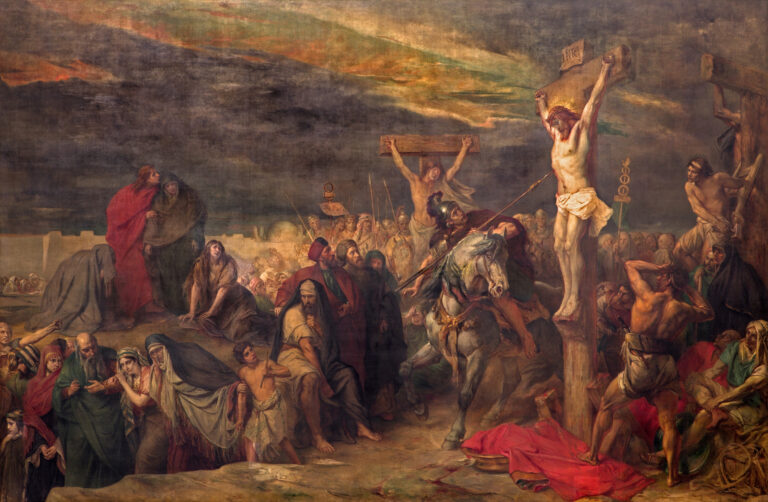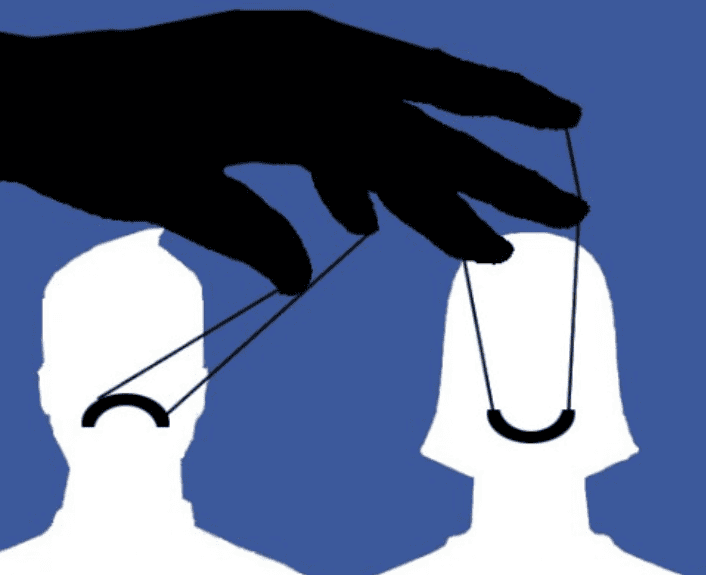What would I do to destroy the minds of future generations, if “I were the Devil”? Warning!
 “If I were the devil, I would engulf the whole world in darkness.” These chilling words from Paul Harvey’s “If I Were the Devil” monolog continue to echo with surprising relevance decades after they were first broadcast. Originally aired in 1965, this powerful warning about societal decay has proven remarkably prophetic for today’s families. Harvey, a beloved American radio commentator known for his distinctive voice and thoughtful commentary, crafted a message that transcends time.
“If I were the devil, I would engulf the whole world in darkness.” These chilling words from Paul Harvey’s “If I Were the Devil” monolog continue to echo with surprising relevance decades after they were first broadcast. Originally aired in 1965, this powerful warning about societal decay has proven remarkably prophetic for today’s families. Harvey, a beloved American radio commentator known for his distinctive voice and thoughtful commentary, crafted a message that transcends time.
Despite being created in a different era, his warnings about moral decline, family breakdown, and cultural manipulation seem eerily applicable to the challenges parents face today.
As digital media reshapes childhood, and traditional values face unprecedented challenges, Harvey’s cautionary tale offers valuable insights for modern families.
In this article, we’ll examine the original broadcast, analyze its key warnings, and explore practical strategies parents can use to protect their children in an increasingly complex world.
What is the Message Behind Paul Harvey’s Monolog?
The voice that delivered “If I Were the Devil” belonged to one of America’s most beloved broadcasters, whose thoughtful commentary captivated millions of listeners for nearly six decades.
Who was Paul Harvey?
Born in 1918 in Tulsa, Oklahoma, Paul Harvey Aurandt built a remarkable career that made him a household name in American broadcasting. After serving in the Army Air Corps during World War II, Harvey dedicated himself to radio, eventually reaching over 24 million listeners weekly through his programs “News and Comment” and “The Rest of the Story.”
His distinctive voice, with its dramatic pauses and unique cadence, became instantly recognizable to generations of Americans. Harvey mastered the art of storytelling through radio, combining news reporting with personal commentary that reflected his conservative values and deep patriotism.
What set Harvey apart was his ability to connect with everyday Americans. Despite his enormous success, he maintained a humble approach, often championing traditional values, hard work, and American ingenuity. His broadcasts typically featured a mix of news, human interest stories, and commentary delivered with his trademark phrase, “And now you know… the rest of the story.”
The original 1965 broadcast
“If I Were the Devil” first aired in 1965, though Harvey continued to revise and rebroadcast versions of it throughout his career. The monolog presents a chilling first-person narrative from the perspective of Satan, outlining a methodical plan to corrupt American society and values.
In this powerful piece, Harvey imagined how the devil would systematically undermine faith, family, patriotism, and morality. The broadcast outlined a strategy that included targeting youth, redefining morality, infiltrating schools and churches, and promoting materialism over spiritual values.
The monolog wasn’t just political commentary – it was a warning about the gradual erosion of foundational societal values. Harvey painted a picture of moral decay occurring not through dramatic events but through subtle, incremental changes that might go unnoticed until significant damage was done.
Throughout different versions, Harvey maintained the core message while updating specific examples to reflect contemporary challenges. This evolution allowed the piece to maintain its relevance across decades of social change.
Why the message still resonates today?
Decades after its original broadcast, Harvey’s warnings feel remarkably prescient to many parents navigating today’s complex social landscape. The challenges he foresaw – from the breakdown of family structure to the normalization of previously taboo behaviors – mirror many concerns expressed by contemporary parents.
The monolog’s enduring power lies in its recognition that cultural change often happens gradually rather than suddenly. Harvey understood that the most effective way to transform a society isn’t through direct confrontation but through subtle shifts in values, language, and social norms – precisely the challenges parents face today.
For modern families, the warnings about media influence seem particularly relevant. Harvey cautioned about the power of entertainment to shape values, long before the advent of smartphones, social media, and algorithm-driven content that now dominate children’s attention.
Additionally, his concerns about educational institutions potentially undermining parental authority and traditional values echo in contemporary debates about curriculum content and parental rights.
The monolog continues to circulate widely online because it speaks to timeless parental concerns: how to raise moral children in an increasingly complex world, how to maintain family cohesion amid social pressures, and how to preserve core values across generations. Despite being created in a different era, Harvey’s commentary offers a framework for understanding current cultural challenges that many parents find both illuminating and concerning.
What are the Key Warnings from ‘If I Were the Devil’?
Paul Harvey’s iconic monolog dissects how evil might methodically undermine American society. His warnings, delivered with characteristic precision, outline a strategic plan that feels increasingly relevant to today’s parents.
1) Moral decay in media and culture
At the heart of Harvey’s warning was the deliberate corruption of entertainment and information. “If I were the devil, I’d educate authors in how to make lurid literature exciting so that anything else would appear dull and uninteresting,” he cautioned. “I’d threaten TV with dirtier movies and vice versa.” This strategy of degrading media content wasn’t merely about shocking audiences but making virtue seem boring by comparison.
Harvey foresaw how entertainment could normalize behavior once considered inappropriate. He warned about a world where media would constantly push boundaries, making yesterday’s taboo today’s standard fare. Notably, he predicted the devil would “make the symbol of Easter an egg and the symbol of Christmas a bottle,” stripping holy days of their spiritual significance and replacing them with commercial symbols.
2) Undermining the family unit
Harvey recognized that strong families form society’s backbone. Consequently, he warned the devil would target marriage itself: “I would convince the young that marriage is old-fashioned, that swinging is more fun, that what you see on TV is the way to be.” He predicted whispers to “young marrieds” that “work is debasing, that cocktail parties are good for you.”
This assault on family structure would extend beyond marriages to parenting itself. The devil would create environments where children receive mixed messages about right and wrong, ultimately weakening parental authority and traditional family bonds.
3) Normalizing dishonesty and greed
Harvey’s warnings about moral corruption extended to economic values. “If I were the devil, I would take from those who have and give to those who wanted until I had killed the incentive of the ambitious,” he stated. Furthermore, he predicted entire states would “promote gambling as a way to get rich,” replacing honest work with fantasies of easy money.
He foresaw a society where greed would become normalized—not just accepted but celebrated. This environment would foster what some mental health professionals now describe as “calculated greed with far-reaching consequences on emotional and physical well-being.”
4) Attacking faith and values
Above all, Harvey understood that undermining faith was essential to moral collapse. “To the young, I would whisper that the Bible is a myth,” he said. “I would convince them that man created God instead of the other way around.”
This strategy would proceed systematically through institutions: “I would evict God from the courthouse, then from the schoolhouse, and then from the houses of Congress.” Within churches themselves, he predicted substituting “psychology for religion and deify science,” hollowing out faith from within.
5) Encouraging division and conflict
Perhaps most chillingly, Harvey warned about fostering discord at every level of society: “If I were the devil, I’d soon have families at war with themselves, churches at war with themselves, and nations at war with themselves, until each in its turn was consumed.”
This strategy of division wouldn’t happen through open attacks but through “a campaign of whispers” coupled with “promises of higher ratings” from “mesmerizing media fanning the flames.” The result would be a society increasingly fractured and unable to unite around common values.
These warnings, delivered decades ago, seem eerily prescient when examining today’s cultural landscape—especially for parents trying to raise children with strong values amid conflicting social messages.
How These Warnings Show Up in Today’s World?
Decades after Paul Harvey’s prophetic broadcast, many of his warnings have materialized in ways perhaps even he couldn’t fully anticipate. Looking at our current cultural landscape reveals how prescient his concerns truly were.
A) Social media and digital manipulation
What Harvey once described as “mesmerizing media” has evolved into sophisticated digital platforms designed to capture and hold attention at any cost. Today’s algorithms curate personalized content bubbles that reinforce existing beliefs while limiting exposure to contrary perspectives. Children now spend an average of 7-8 hours daily on screens outside of schoolwork, their developing minds shaped by content optimized not for their wellbeing but for engagement metrics.
Social platforms employ psychological tactics reminiscent of gambling machines—variable rewards, endless scrolling, and notification systems trigger dopamine responses that create dependency. Ironically, many tech executives strictly limit their own children’s screen time, recognizing the addictive nature of products they’ve helped create.
B) Decline in trust and authority
Harvey warned about the systematic removal of traditional sources of authority. Today, we witness unprecedented levels of institutional distrust. Public confidence in government, media, religious organizations, and educational systems has plummeted. Parents often find themselves navigating a world where their guidance competes with countless contradictory voices claiming authority.
This erosion extends to expertise itself. In an environment where anyone can publish content, distinguishing credible information from misinformation becomes increasingly difficult—especially for young people still developing critical thinking skills.
C) Rise of consumerism and instant gratification
The marketplace increasingly targets even the youngest consumers, with the average child now seeing thousands of advertisements daily. Marketing strategies deliberately foster discontent and desires that can never be fully satisfied. The message that happiness comes through purchasing pervades modern culture, just as Harvey predicted.
Simultaneously, entertainment and technology have conditioned us to expect immediate gratification. Streaming services, same-day delivery, and instant downloads have created an environment where delayed rewards—the foundation of discipline and achievement—seem increasingly foreign to many children.
D) Erosion of community and connection
Perhaps most concerning is the fragmentation of community bonds. Despite unprecedented technological connectivity, genuine human connection has declined. Children spend less time in unstructured play with peers and more time in isolated digital interactions. Many neighborhoods lack the social cohesion that once provided collective supervision and support for families.
Furthermore, political and cultural polarization has divided communities that previously found common ground despite differences. This societal fragmentation mirrors exactly what Harvey described—families, communities and nations “at war with themselves” through “a campaign of whispers.”
What is the Psychological Impact on Children and Teens?
The warnings in Paul Harvey’s monolog find their most troubling manifestation in the psychological state of today’s youth. Research reveals alarming trends that confirm his foresight about a morally confused generation.
I) Confusion about right and wrong
Modern adolescents navigate a world where moral boundaries have blurred considerably. They face “a difficult world and have to process an amazing amount of information and conflicting values every day,” making them genuinely “overwhelmed on many levels.” Most teenagers experience a culture where “what is right, healthy, and nurturing is deemed to be all wrong and what is wrong is thought to be all right.” This moral inversion creates profound confusion during a critical developmental period when teens are forming their core values and ethical frameworks.
II) Increased anxiety and depression
The statistics paint a sobering picture. Globally, one in seven 10-19-year-olds experiences a mental disorder [1]. The proportion of 15/16 year olds reporting frequent anxiety or depression has doubled in the last 30 years—from 1 in 30 to 2 in 30 for boys and 1 in 10 to 2 in 10 for girls [2]. Moreover, anxiety disorders are the most prevalent psychiatric conditions in American teenagers [3]. These mental health challenges directly connect to the fragmented value systems Harvey warned about.
III) Loss of identity and purpose
In a revealing survey, 63% of young adults aged 18-34 agreed with the statement: “As I get older, I sometimes find it hard to know what my purpose in life is” [4]. Indeed, the critical task of identity development becomes extraordinarily difficult when surrounded by contradictory messages. Adolescents experiencing identity confusion often struggle with establishing “a stable and authentic sense of self” [5], hence making them vulnerable to unhealthy behaviors as they search for meaning.
IV) Vulnerability to peer pressure and online influence
Starting around age 10, children’s brains undergo fundamental shifts that increase their sensitivity to social rewards and peer approval [6]. Nevertheless, this natural developmental stage occurs precisely when most receive smartphones, exposing them to unprecedented social pressures. Consequently, digital platforms provide “crucial opportunities for interaction” yet simultaneously link to “anxiety, depressive symptoms, and body image concerns” [6]. The algorithms that shape online experiences often contain “structural racism and bias,” which can lead to “next-day depression and anxiety symptoms” [7].
What Parents Can Do to Protect Their Families?
Facing the cultural challenges that Paul Harvey predicted requires intentional family strategies. In today’s complex digital landscape, parents need practical tools to nurture resilient children who can withstand harmful influences.
1) Teach critical thinking and media literacy
At least 21 state legislatures have reformed K-12 media literacy education [8], recognizing that youth spend 4-6 hours daily online [8]. This education has become essential as 84% of young adults report uncertainty in distinguishing fact from fiction on social media [8]. Even more concerning, 82% of middle school students cannot tell the difference between news stories and advertisements [8].
Media literacy teaches children to question content rather than passively consume it. One educator explains, “It’s all about inquiry—learning to ask relevant questions and knowing how to find credible answers” [9]. Parents can start this process early by examining toy advertisements with young children and asking, “Do you think that toy can really do that?” [9].
2) Model strong moral values
Children base their actions on what they witness in caregivers around them. As one psychologist notes, parents should actively engage in ethical behavior as a way of modeling moral decisions [10]. Avoid generalizations like “you’re a good boy” and instead praise specific behaviors: “you know when others need help” [10].
Create clear moral guidelines for your home. Consider making a poster of moral rules like “Always think of others first” or “Always tell the truth, no matter how hard” [11]. Furthermore, stories featuring heroes who learn to tell the truth make children more likely to be truthful themselves [11].
3) Create open lines of communication
Positive two-way communication is essential to building your child’s self-esteem [12]. Children understand language before they master speech, so establish clear communication patterns early [12]. Make time daily to simply sit and listen to your child [12].
When discussing social media content, engage in conversation about what they’re seeing and how it connects to social justice [13]. For difficult topics, create an environment where issues can be discussed without fear of overreaction or blame [12].
4) Set healthy boundaries with technology
Establish family technology rules that apply to adults too [14]. Create screen-free zones and times, particularly during meals, homework, and bedtime [15]. Overnight should be non-negotiable tech-free time, with devices stored in parents’ bedroom [16].
Be clear about consequences when rules aren’t followed, and invite children’s input on appropriate penalties [16]. Install parental controls on all devices and ensure children use age-appropriate technology [14].
5) Encourage community involvement
Community activity teaches “civic responsibility”—giving back to communities and helping others [17]. Children can join clubs, help with younger children’s activities, or promote environmental causes [17].
These activities provide opportunities to meet positive adult role models and see the world in new ways [17]. Community involvement protects pre-teens and teenagers from sadness and depression while reducing the likelihood of substance abuse and other problems [17].
Conclusion
Paul Harvey’s prophetic words, spoken decades ago, ring undeniably true today. Though crafted in a different era, his warnings about systematic moral decay, family breakdown, and cultural manipulation serve as a roadmap to understanding many challenges modern parents face. The digital landscape has certainly amplified these concerns, creating unprecedented access to harmful influences that shape young minds.
Parents must recognize that protecting children requires intentional, consistent effort. Critical thinking skills stand as the first line of defense against media manipulation. Children equipped to question what they consume rather than passively accept it develop natural immunity to harmful messaging. Additionally, parents who actively model strong moral values provide children with an ethical compass that guides them through confusing cultural messages.
Clear communication remains essential throughout this journey. Families who discuss difficult topics openly create safe spaces where children feel comfortable sharing concerns instead of seeking answers elsewhere. Likewise, technology boundaries protect developing minds from overexposure to digital influences designed to capture attention regardless of consequences.
Community involvement offers another powerful shield against cultural decay. Children connected to positive community activities develop purpose, belonging, and exposure to diverse role models beyond media representations.
The battle for our children’s hearts and minds continues daily. Despite the challenges, parents still wield significant influence when they approach these issues thoughtfully and consistently. Harvey’s warnings serve not as a reason for despair but as a call to vigilance. Armed with awareness and practical strategies, families can still thrive amid cultural pressures, raising children who possess both moral clarity and resilience. The devil may indeed have his plans—but attentive parents have the power to counter them.
References
[1] – https://www.who.int/news-room/fact-sheets/detail/adolescent-mental-health
[2] – https://www.nuffieldfoundation.org/news/increased-levels-of-anxiety-and-depression-as-teenage-experience-changes-over-time
[3] – https://pmc.ncbi.nlm.nih.gov/articles/PMC10406047/
[4] – https://www.usnews.com/news/health-news/articles/2023-09-29/social-media-suicidal-thoughts-and-an-identity-crisis-among-young-adults
[5] – https://www.psychologytoday.com/us/blog/its-not-just-about-the-food/202405/teen-identity-crisis-finding-authenticity-in-a-digital-0
[6] – https://www.apa.org/news/apa/2022/social-media-children-teens
[7] – https://www.apa.org/monitor/2023/09/protecting-teens-on-social-media
[8] – https://www.apa.org/monitor/2024/09/media-literacy-misinformation
[9] – https://www.nprillinois.org/2023-11-21/how-to-teach-media-literacy-to-children
[10] – https://psychcentral.com/health/developing-a-conscience-knowing-the-difference-between-right-and-wrong
[11] – https://www.bchfamily.org/post/2016-2-24-seven-ways-to-teach-moral-values-to-children
[12] – https://www.betterhealth.vic.gov.au/health/healthyliving/young-children-and-communication
[13] – https://therippleeffecteducation.ca/social-justice-issues/
[14] – https://psychcentral.com/health/technology-boundaries-for-children-and-teens
[15] – https://digitalwellnesslab.org/family-guides/5-strategies-for-setting-digital-media-boundaries-and-guidelines-for-kids-a-guide-for-parents/
[16] – https://youthministry360.com/blogs/ministry-to-parents-blog/technology-and-your-family-establishing-healthy-boundaries?srsltid=AfmBOoq_QzO3e9VMqvHndR6b_Cn1QAQPIRkkCZPPGgBW5fid5j9EPHuB
[17] – https://raisingchildren.net.au/pre-teens/entertainment-technology/free-time-activities/community-activity






